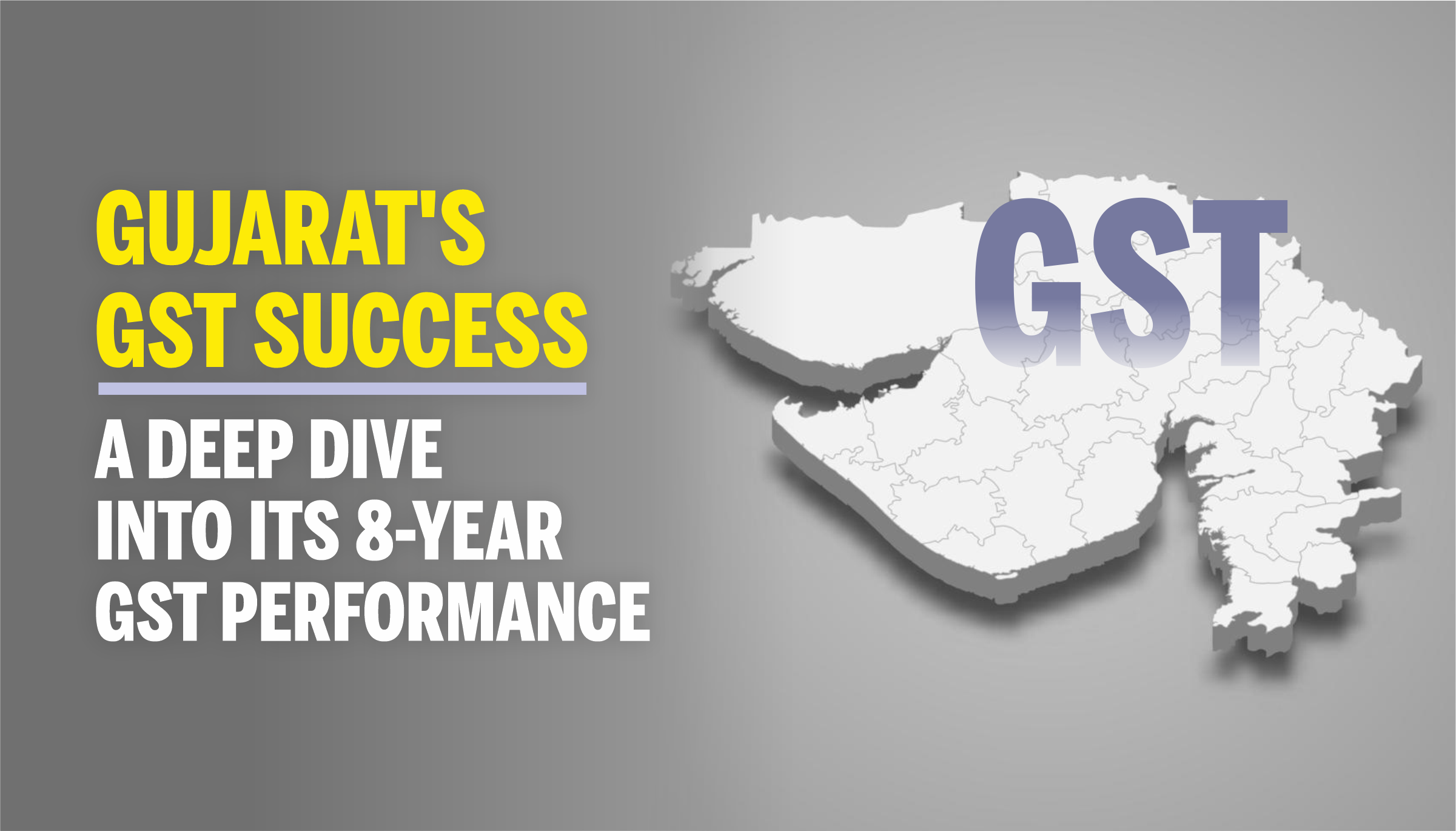
In the evolving landscape of India’s tax reforms, Gujarat stands out as a beacon of success, demonstrating remarkable strides in taxpayer growth, revenue generation, and digital compliance under the Goods and Services Tax (GST) regime. Eight years since its inception, the “One Nation, One Tax” vision has not only simplified the complex web of previous indirect taxes but has truly supercharged the economic dynamics of this industrially vibrant state.
The transformation is evident in the staggering statistics. From a base of just over 5.15 lakh taxpayers in 2017, Gujarat’s registered taxpayer count has surged to an impressive 12.66 lakh by the 2024-25 fiscal year, marking an astounding 145% increase. This exponential growth is not merely a statistical anomaly but a testament to the state’s proactive embrace of tax reforms, its dynamic business environment, and the increasing formalization of its trade and industry sectors.
Unpacking Gujarat’s Fiscal Outperformance
Gujarat’s performance metrics paint a compelling picture of fiscal strength and administrative efficiency:
Accelerated Taxpayer Growth:
The state’s taxpayer growth rate of 6.38% in 2024-25 significantly outpaces the national average of 3.86%. This remarkable differential underscores Gujarat’s appeal as an investment destination and its successful integration of a broader base of businesses into the formal economy.
Soaring Revenue Collections:
Gujarat’s GST revenue has reached an impressive ₹1,36,748 crore in 2024-25, representing a year-on-year increase of ₹11,579 crore. This substantial growth highlights the robust economic activity within the state and the enhanced efficiency of tax collection mechanisms. The state now contributes a significant 8.2% to the nation’s domestic GST pool, solidifying its position among the top three GST-contributing states in the country.
SGST and IGST Surge:
Revenue from State GST (SGST) and Integrated GST (IGST) collections in Gujarat have climbed to ₹73,200 crore, an increase of ₹8,752 crore from the previous fiscal year. This 13.6% growth in SGST and IGST collections further outstrips the national average of 10.31%, signaling robust intra-state consumption and inter-state trade. These increased allocations are crucial, as they directly fuel state-led investments in critical sectors like education, healthcare, and infrastructure, fostering inclusive growth.
Digital Prowess and Compliance Excellence
Beyond mere revenue figures, Gujarat’s leadership in digital tax compliance sets a national benchmark. The state’s proactive adoption of technology has been a cornerstone of its GST success story:
E-Way Bill Dominance:
With a staggering 13.98 crore e-way bills generated by suppliers in 2024-25, Gujarat ranks first in the country by supplier count. It also holds the second position by e-way bill value and third by volume, unequivocally confirming its dominance in goods movement and trade transparency. This extensive use of e-way bills not only streamlines logistics but also significantly curtails tax evasion, fostering a more equitable playing field for legitimate businesses.
Unparalleled Return Filing Compliance:
Gujarat consistently leads the nation in timely return filing. The state has achieved an impressive 88.9% compliance for GSTR-3B and 85.5% for GSTR-1, setting a gold standard for punctuality and discipline in GST filing across India. This high compliance rate reflects a strong adherence to regulatory frameworks by businesses and an effective monitoring system by the state’s tax administration.
Top-Tier Key Performance Indicators (KPI):
Gujarat’s overall performance is further validated by its standing second nationally on the GST Key Performance Indicators (KPI) scoreboard with a score of 71.69 points, trailing only Maharashtra. Out of 22 performance parameters, Gujarat proudly ranked first in nine, showcasing its all-round excellence in implementation, compliance, and digital governance.
The Impact: Simplified Business and Unlocked Growth
The transition from a convoluted system of Value Added Tax (VAT), Central Sales Tax (CST), octroi, and various entry taxes to the unified GST regime has been nothing short of revolutionary for Gujarat. For a state heavily reliant on trade, manufacturing, and exports, the streamlined tax structure has delivered tangible benefits:
Simplified Business Operations:
Millions of traders and industrial units have experienced a significant reduction in compliance complexities, allowing them to focus more on core business activities rather than navigating intricate tax procedures.
Reduced Cascading Tax Burden:
The elimination of the cascading effect of taxes has lowered the overall cost of goods and services, making businesses more competitive and potentially leading to more affordable prices for consumers.
Increased Transparency:
The digital backbone of GST has brought unprecedented transparency to transactions, minimizing scope for arbitrary assessments and fostering a more predictable tax environment. This clarity and uniformity have proven to be a catalyst, unlocking new avenues for growth and attracting fresh investments into the state.
A Model for the Nation
Gujarat’s impressive journey under GST serves as a compelling case study for other states and the nation as a whole. Its success is a testament to the power of policy clarity, robust digital infrastructure, and a steadfast commitment to efficient tax administration. As India continues its trajectory towards becoming a global economic powerhouse, Gujarat stands as a shining example of how a well-implemented, unified tax system can indeed be a cornerstone of sustained economic prosperity and formalization. The “Gujarat Model” for GST compliance and revenue growth offers invaluable insights, paving the way for a more streamlined, transparent, and prosperous economic future for all of India.
